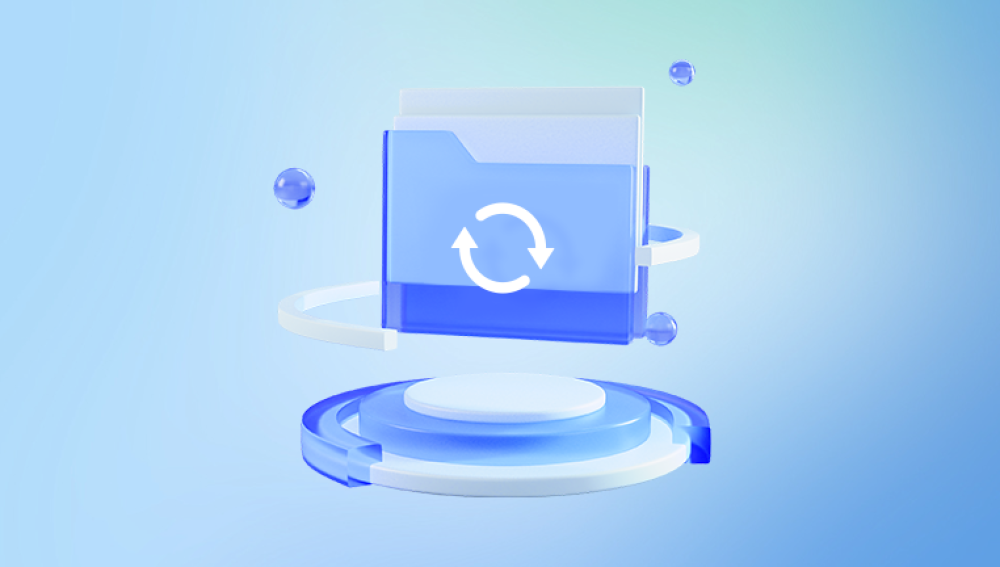Maybe you accidentally deleted it, or you simply can’t find it. The good news is that there are multiple methods to retrieve downloaded files, whether they are lost, accidentally deleted, corrupted, or saved in unexpected locations.
Chapter 1: Where Downloads Go
1.1 The Default Downloads Folder
On most systems, downloaded files automatically go to a specific folder.
Windows: C:\Users\[YourName]\Downloads
macOS: /Users/[YourName]/Downloads
Android: Internal Storage > Downloads or My Files
iOS: Files > Downloads (iCloud Drive or On My iPhone)
Web Browsers (Chrome, Firefox, Edge): Typically point to the OS’s default Downloads folder unless configured otherwise.

1.2 Why Files May Not Appear in the Downloads Folder
Changed browser settings
Saved in a different directory
Download interrupted or incomplete
Antivirus removed the file
File moved by cleanup software
Chapter 2: Locating Recently Downloaded Files
2.1 Using Browser Download History
Chrome
Press Ctrl + J (Windows) or Cmd + Option + L (Mac)
Shows recently downloaded files and their location on disk
Firefox
Press Ctrl + J
Click the folder icon next to the file name to open its location
Microsoft Edge
Click the three-dot menu > Downloads
Use the “Show in folder” option
2.2 Using File Explorer or Finder
On Windows:
Open File Explorer
Navigate to Downloads
Use the Search bar to look for file types or names
On macOS:
Use Finder > Downloads
Sort by Date Modified to see latest files
Use Spotlight (Cmd + Space) to search
Chapter 3: Recovering Accidentally Deleted Downloads
3.1 Check the Recycle Bin or Trash
Files deleted accidentally may still be in your system's trash.
Windows:
Open Recycle Bin
Locate the file
Right-click > Restore
Mac:
Open Trash
Right-click the file > Put Back
3.2 Use File History or Time Machine
Windows File History:
Go to Settings > Update & Security > Backup
If File History is enabled, browse to the backup version of your Downloads folder
Mac Time Machine:
Connect Time Machine drive
Open Downloads folder in Finder
Launch Time Machine
Use timeline to restore deleted files
Chapter 4: Using File Recovery Software
If the file is not in the Recycle Bin/Trash and no backup is available, use recovery software.
4.1 Recommended Tools
Drecov Data Recovery
Downloaded a file but can’t find it? Whether it was lost, accidentally deleted, or corrupted, Drecov Data Recovery can help you retrieve downloaded files quickly and efficiently. Designed with simplicity and power in mind, this software is an excellent choice for recovering files downloaded from web browsers, email attachments, cloud platforms, and file transfer programs.
When a file is downloaded, it's typically saved in the default Downloads folder on your device. But if the file disappears due to deletion, interruption, or system cleanup it may still be recoverable. Even when removed from the Recycle Bin or missing after a failed download, the data often remains on your drive until it is overwritten. That’s where Drecov Data Recovery comes in.
Using advanced scanning algorithms, Panda can detect and restore lost downloads from internal hard drives, USB drives, external disks, and SD cards. The process is easy: install the software, select the location where the file was likely saved (e.g., the Downloads folder or browser cache directories), and start a Quick or Deep Scan. Once the scan completes, preview your files, select what you want to recover, and restore them to a safe location.
4.2 How to Use Recovery Software
Download and install on a different drive
Open the program
Select the location of the Downloads folder
Choose Deep Scan
Preview and recover files
Tip: Don’t save recovered files to the same drive as the one you’re recovering from.
Chapter 5: Retrieving Downloads from the Browser Cache
Some files, especially temporary files like images or PDFs, may reside in the cache.
5.1 Chrome Cache Recovery (Manual)
Navigate to:
pgsql
CopyEdit
C:\Users\[YourName]\AppData\Local\Google\Chrome\User Data\Default\Cache
Use a cache viewer tool (like ChromeCacheView) to locate files
5.2 Firefox Cache
Type about:cache in the Firefox address bar
Locate cache entries
Use tools like MozillaCacheViewer
Chapter 6: Finding Lost Downloads on Android and iOS
6.1 On Android
Use the Files app or My Files
Go to Downloads or Internal Storage > Download
If lost, use recovery apps like:
DiskDigger
Dumpster
Dr.Fone
6.2 On iPhone or iPad
Open the Files app
Tap Browse > Downloads
Use Spotlight to search
Use iCloud.com if file was downloaded via Safari
Note: iOS is more restrictive with file recovery—use iCloud backups or third-party apps like iMobie or Tenorshare if needed.
Chapter 7: Recovering Incomplete or Failed Downloads
7.1 Why Downloads Fail
Internet interruptions
Antivirus interference
Corrupt download links
7.2 Resume a Failed Download
Use download managers like Internet Download Manager (IDM) or Free Download Manager (FDM)
These tools support pause/resume and segmented downloading
7.3 Check for Partial Files
Look for files with .part, .crdownload, or .tmp extensions in your Downloads folder
These indicate interrupted downloads
Reinitiate the download if the file is incomplete
Chapter 8: Recovering Files Downloaded via Torrent Clients
If you used torrent software (e.g., uTorrent, BitTorrent):
Open the client
Look for Completed Downloads
Right-click > Open Containing Folder
If missing, check your default torrent download directory
If deleted, use file recovery software and search using known extensions (e.g., .mp4. .zip, .pdf).
Chapter 9: Retrieving Files from Cloud Storage
Sometimes, downloaded files are actually stored or synced with cloud services.
9.1 OneDrive
Check OneDrive > Downloads or OneDrive > Documents
Use the web interface to access deleted files in the Recycle Bin
9.2 Google Drive
Go to drive.google.com
Check Recent or Trash
Restore missing files if found
9.3 Dropbox
Visit dropbox.com
Navigate to Deleted Files
Restore previous file versions or removed items
Chapter 10: Special Cases
10.1 Zipped Files
If the download was a zip file:
Ensure it fully downloaded before extracting
Use 7-Zip or WinRAR to try opening partially downloaded files
10.2 Downloaded Apps and Installers
Some apps auto-delete installers after installation:
Re-download from official website
Check browser history for source link
Chapter 11: Preventing Future Download Loss
11.1 Always Know Your Download Location
Set a dedicated folder
Go to browser settings > Downloads > “Ask where to save each file”
11.2 Use Download Managers
Prevent download failures
Enable pause/resume
Track download history
11.3 Regular Backups
Back up Downloads folder weekly
Use OneDrive or Google Drive sync
11.4 Disable Cleaning Tools on Downloads
Tools like CCleaner may auto-delete “unused” files
Add exclusions for the Downloads folder
Chapter 12: Professional Help (When Needed)
12.1 When to Seek Help
Critical file missing with no backup
Recovery software fails
Download was corrupted, and data can't be rebuilt
Retrieving downloaded files whether lost, deleted, or misplaced—is possible using the right tools and steps. From browser settings and cloud backups to file recovery software and professional help, there’s a solution for nearly every scenario.




